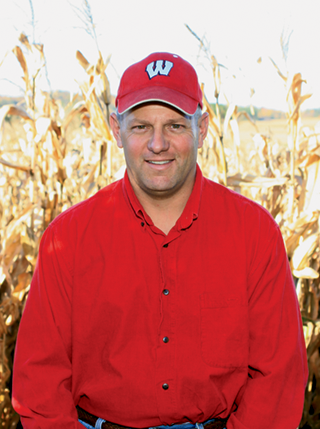Variable-rate seeding is a relatively new practice that is fairly easy to adopt with today’s precision farming technology.
If you already have a yield monitor and/or auto-steering system, it may be reasonable to buy a variable-rate drive and control for your planter so you can begin to adjust seed populations on the go.
With seed costs escalating and erratic weather conditions to consider, we can’t afford to overseed field areas with low moisture-holding capacity.
And with high commodity prices, we can’t afford to underseed high-producing areas of the field, either.
Being able to change the seeding rate on the fly, based on soil production and moisture capacity, is crucial to improving overall profitability.
Know Your Populations
Even though you may purchase a variable-rate drive to do variable-rate applications, you will likely need to use this variable-rate drive to research different seeding rates on your farm before you actually go to variable-rate seeding.
This drive will allow you to easily change populations, (without having to change sprockets) to put in different seeding rates and evaluate those seeding rates against your traditional seeding rate.
It’s important to know how to set your variable-rate populations for different areas of the field so you can decide what populations should be used.
To do this, purchase the technology and experiment with it, rather than waiting for someone to perfect the process of writing prescriptions for your field.
Do The Math
Set up your planter so you can plant with your normal fixed-rate population on one side of the planter, and then use different fixed rates on the other side of the planter.
With these different population strips running across your fields, located side by side, you can compare the yields and crop agronomic conditions of your normal population to the new populations. That helps you determine what the optimum populations will be in various areas of your fields.
You can also assess how these populations affect other agronomic factors, such as standability and diseases, across various soil types and topography conditions.
Once you have 2 to 3 years of data on how the hybrids perform at different populations, and in different soil regions in your fields, you can look at the yield-monitor data and understand how the populations should be adjusted for different field areas.
Currently, I use the drives to adjust seeding rates manually as I go through field areas with lower water-holding capacity.
I also have several fields with controlled plots where I run the base rate against three other seeding rates. That allows me to establish the most desirable seeding rates for my different soil types and topographies.
Get Your Money’s Worth
Within a couple more years, I will have enough data to develop prescriptions for each field. Seeding rates will be controlled by prescriptions set up in my monitor.
Several companies provide total systems for doing different precision-seeding applications, including Ag Leader, Raven, Deere, AGCO, Trimble and others.
In order to ensure these systems are economical for your farm, use them for as many tasks as possible. I use an Ag Leader Integra System for many tasks:
- I have a control module that applies dry fertilizer at variable rates. I can control the speed of the hydraulic motor, which drives my fertilizer spreader apron, so I can put on variable rates of dry fertilizer.
- I have a liquid-control module used with a Raven anhydrous control system to control nitrogen applications for fixed- and variable-rate applications.
- With both of these fertilizer applications, the Integra provides guidance and steering control so I don’t over- or underlap applications. The Integra also records the applications.
- I use the Integra when planting to control two variable-rate Rawson drives on my planter. This lets me change seeding rates on the fly so I can research which populations will be most productive for my farm.
- The Integra provides guidance and steering when planting, and records all planting operations.
- When planting, the Integra controls row-shutoff clutches on the planter so we’re not overplanting on headlands — especially valuable in odd-shaped fields. The system saves a lot of seed and improves productivity, where in the past, overseeding reduced yields and caused residue problems.
-
Finally, we use the Integra in our sprayer tractor with a liquid-control module to control the spray rate and booms. We also have guidance and steering for spraying with this system.
We’ve adopted the whole system, which cost us about $10 an acre and takes about 5 years to see a return on investment.
This is a small cost to ensure we’re managing inputs efficiently and maximizing yield potential in an environmentally friendly way.






